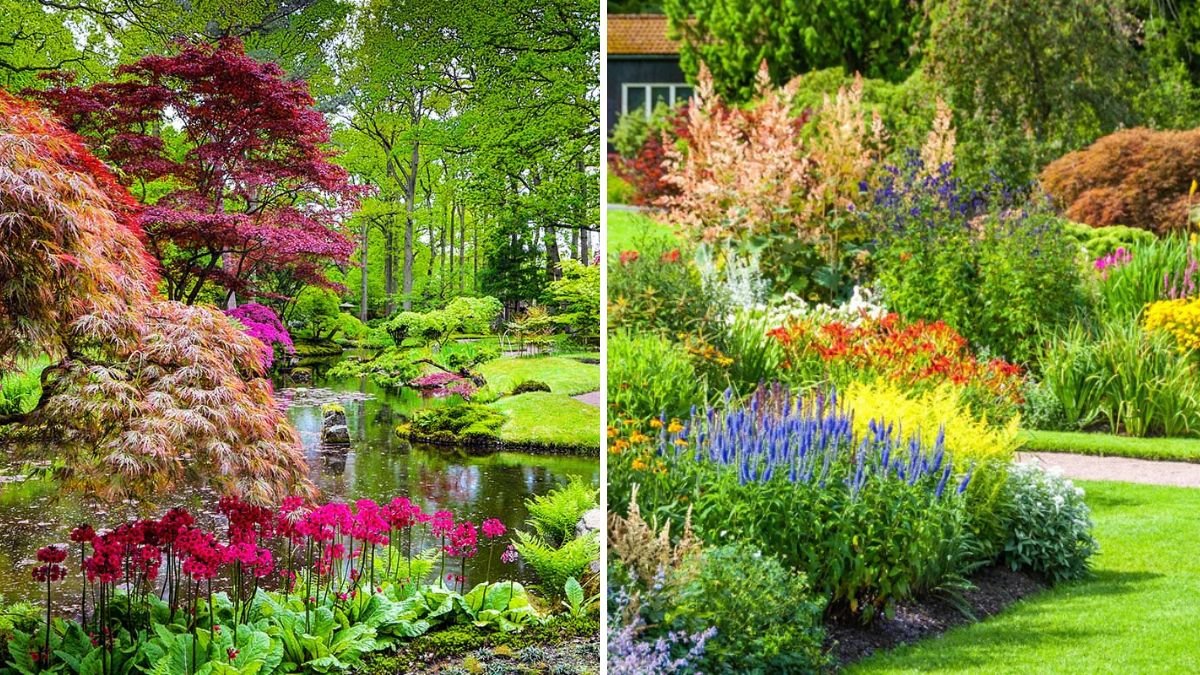A flower garden is not just a collection of plants; it is a living canvas that brings vibrancy, mood, and harmony to outdoor spaces. Color plays a pivotal role in garden design, influencing perception, creating focal points, and evoking emotions. A color-coordinated flower garden blends aesthetics with botanical diversity, offering a visually cohesive and enjoyable experience. Whether your goal is a serene retreat, a bright cheerful landscape, or a dramatic floral display, thoughtful planning of color schemes ensures that every bloom contributes to the garden’s overall impact.
This guide explores principles, techniques, plant selection, seasonal considerations, and maintenance strategies for creating a stunning color-coordinated flower garden.
Step 1: Understanding Color Theory in Gardening
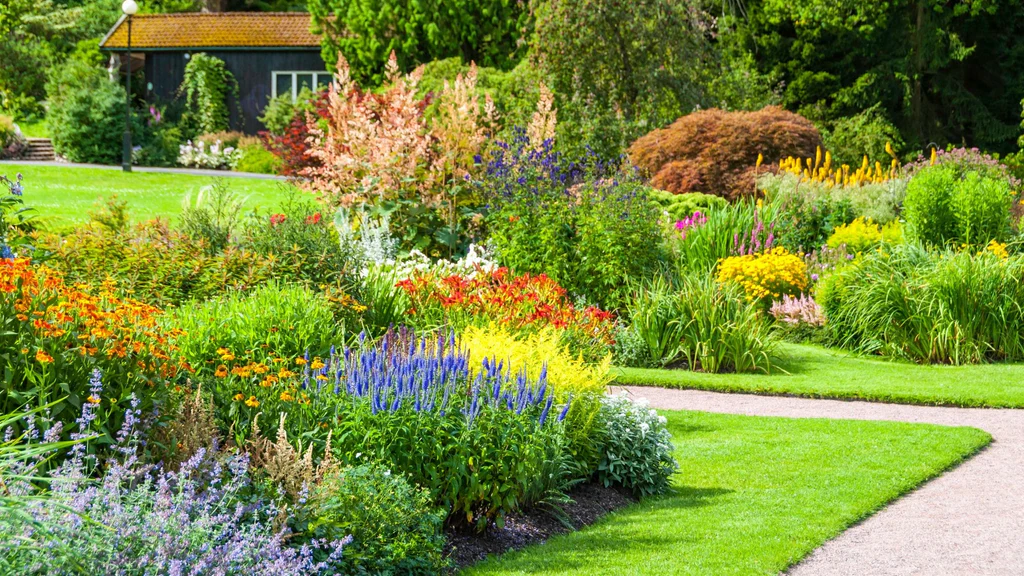
Color theory forms the foundation for designing a visually appealing garden:
- Complementary Colors: Colors opposite each other on the color wheel, such as purple and yellow or red and green, create high-contrast, vibrant effects.
- Analogous Colors: Colors next to each other on the wheel, such as blue, teal, and purple, create harmony and soothing transitions.
- Monochromatic Colors: Variations of a single hue create a calm and elegant effect.
- Triadic Colors: Three colors evenly spaced on the wheel, like red, yellow, and blue, produce balanced and dynamic visuals.
- Warm vs. Cool Colors: Warm colors (red, orange, yellow) energize spaces, while cool colors (blue, green, purple) create calm and relaxation.
Understanding these principles allows you to strategically choose flowers that complement each other and your garden’s mood.
Step 2: Assessing Your Garden Space
Before selecting flowers, evaluate your garden layout:
- Sunlight: Identify sunny, partially shaded, and shaded areas; plant according to light requirements.
- Soil Type: Test soil texture, pH, and fertility; amend as needed.
- Garden Shape: Consider pathways, borders, raised beds, and focal points.
- Existing Plants: Factor in mature trees, shrubs, and existing flower beds.
A detailed assessment ensures practical flower placement and vibrant color impact throughout the space.
Step 3: Selecting a Color Palette
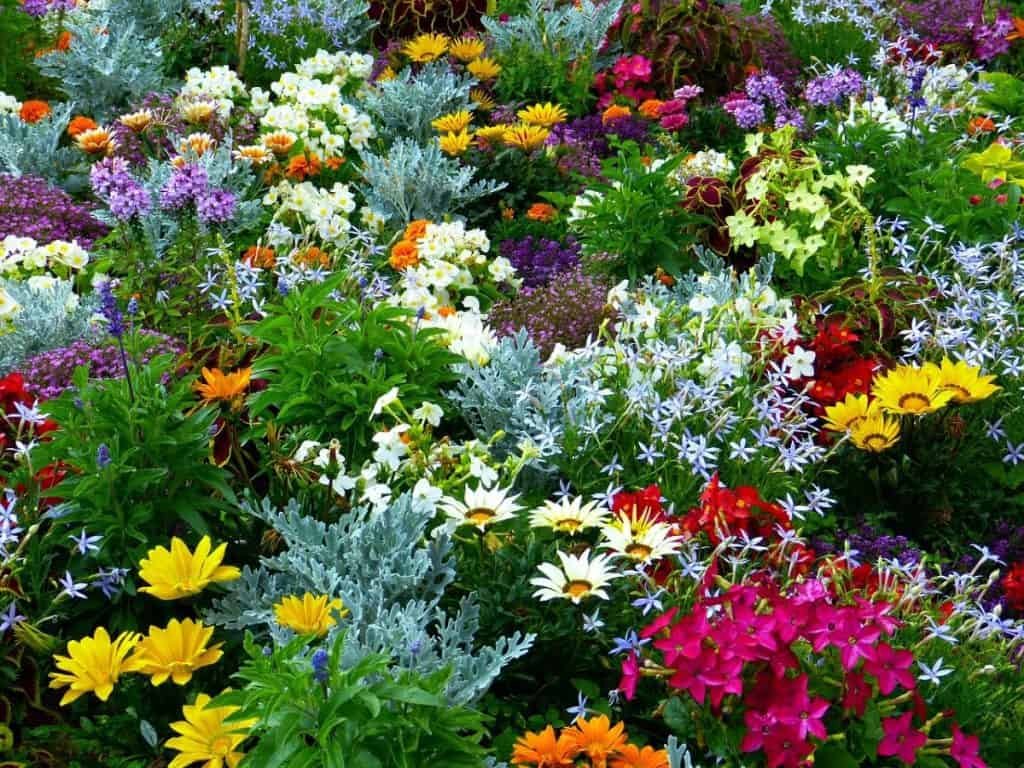
Choosing the right color palette is essential for harmony:
- Single-Hue Theme: Focus on one color with varying shades; e.g., all shades of purple for a cohesive, elegant garden.
- Two-Color Theme: Pair complementary or analogous colors for visual interest.
- Three or More Colors: Use a triadic scheme for vibrant, lively displays.
- Seasonal Considerations: Mix early, mid, and late-blooming flowers to maintain consistent color throughout the growing season.
- Accent Colors: Use small pops of contrasting colors to draw attention to focal points.
A well-planned palette ensures flow and balance, preventing visual clutter or discord.
Step 4: Choosing Flowers for Color Coordination
Select flowers not only for color but also for bloom time, height, and texture:
Popular Flower Choices:
- Red: Roses, geraniums, salvias
- Orange: Marigolds, calendulas, nasturtiums
- Yellow: Sunflowers, coreopsis, daffodils
- Blue: Delphiniums, lobelia, hydrangeas
- Purple: Lavenders, irises, petunias
- White: Daisies, alyssum, gardenias
Tips for Selection:
- Mix annuals and perennials for continuous blooms.
- Use different foliage textures to enhance color impact.
- Consider flowering height: taller blooms at the back, shorter in front, creating layered depth.
Thoughtful flower selection creates a visually dynamic yet coordinated garden.
Step 5: Designing Garden Layout with Color in Mind
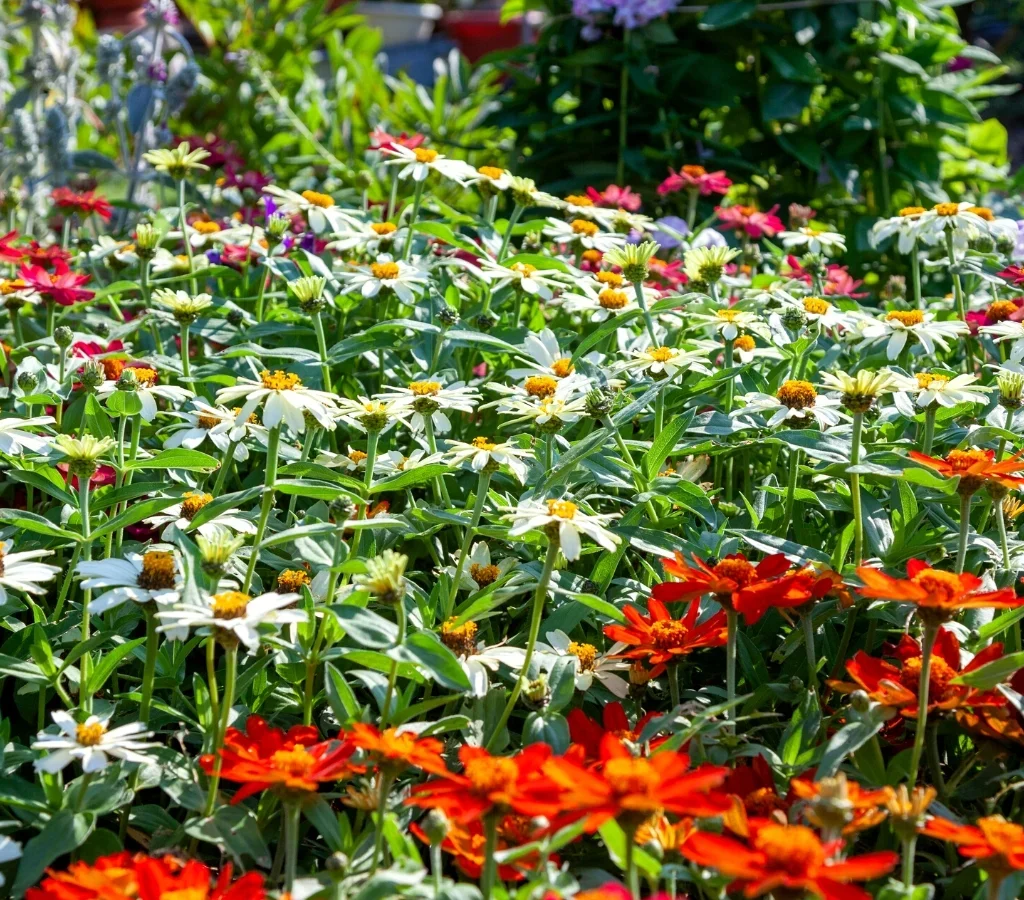
Proper layout enhances color coordination:
- Borders and Edges: Plant uniform colors along borders for clean, structured appeal.
- Mass Planting: Use large groups of the same color to create strong visual statements.
- Pathways: Plant alternating colors along walkways to guide the eye and create interest.
- Focal Points: Highlight garden features, such as fountains or sculptures, with contrasting flowers.
- Layering: Combine tall, medium, and low plants to balance height and color flow.
A deliberate layout ensures each flower contributes to overall harmony without overwhelming the viewer.
Step 6: Seasonal Color Planning
Color coordination requires planning for year-round impact:
- Spring: Tulips, daffodils, hyacinths for pastel or vibrant colors.
- Summer: Marigolds, zinnias, salvias, and petunias for bold, bright displays.
- Fall: Chrysanthemums, asters, and ornamental grasses for warm tones.
- Winter (if climate allows): Pansies, violas, and hellebores for subtle winter color.
By planning bloom succession, your garden maintains coordinated color throughout all seasons.
Step 7: Incorporating Foliage and Texture
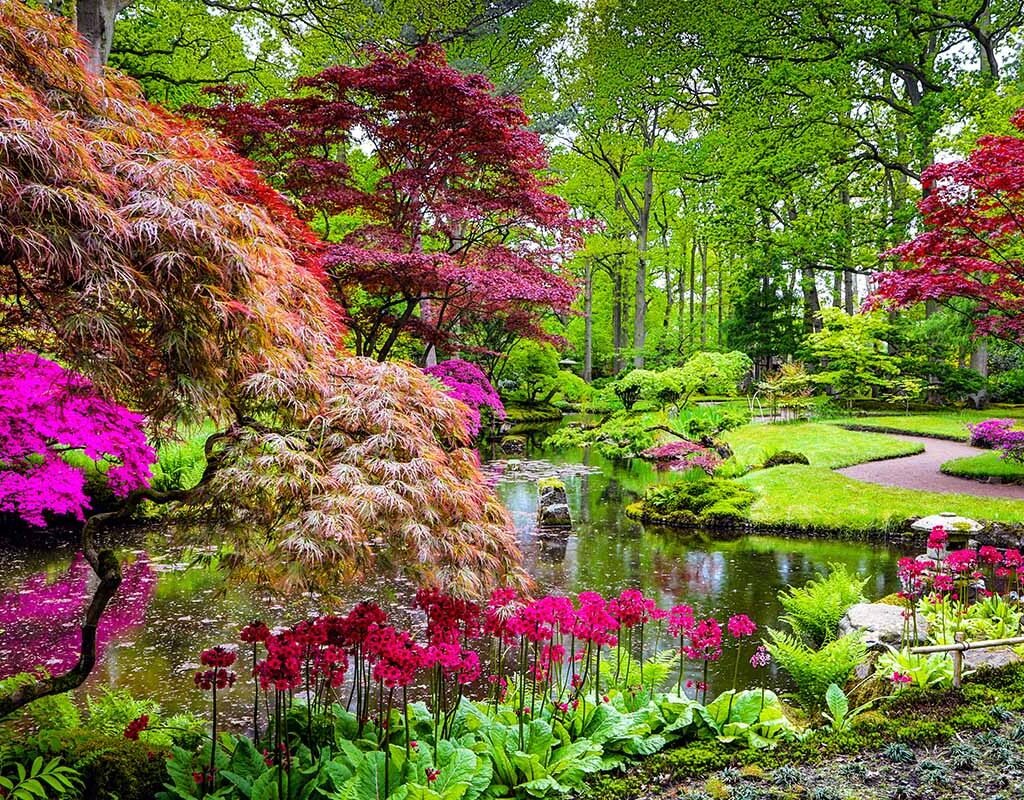
Color isn’t limited to flowers; foliage and texture enhance design:
- Foliage Colors: Silver, variegated green, dark purple, or blue-green leaves provide contrast.
- Leaf Texture: Broad, fine, or feathery leaves create depth and interest.
- Evergreen Elements: Incorporate evergreen shrubs or grasses to maintain structure during off-season.
Combining foliage and flowers adds depth, contrast, and visual rhythm, enhancing your color-coordinated garden.
Step 8: Using Containers and Raised Beds for Color Control
Containers and raised beds allow flexible color experimentation:
- Containers: Ideal for balconies, patios, or compact spaces; mix colors for seasonal arrangements.
- Raised Beds: Helps organize color schemes in vegetable and flower gardens.
- Color Zones: Create specific zones for warm, cool, or accent colors for maximum effect.
This method offers mobility and seasonal flexibility, allowing you to refresh colors as needed.
Step 9: Maintenance for Color Harmony
Keeping colors vibrant requires consistent care:
- Deadheading: Remove faded blooms to promote continuous flowering.
- Pruning: Maintain shape and encourage new growth.
- Fertilization: Use a balanced or bloom-promoting fertilizer to enhance flower colors.
- Watering: Consistent watering prevents wilting and color fading.
- Pest Management: Protect plants to maintain vibrant, healthy flowers.
Routine maintenance ensures your garden remains visually cohesive and colorful throughout the growing season.
Step 10: Additional Tips for Stunning Results

- Contrast and Balance: Mix bold and muted tones to avoid monotony.
- Repetition: Repeat key colors in different garden areas to create unity.
- Lighting: Consider sunlight exposure; colors may appear differently in shade or sun.
- Garden Accessories: Complement flower colors with pots, garden ornaments, or mulch to enhance coordination.
- Personal Taste: Choose colors that evoke your desired mood, whether calm, cheerful, or dramatic.
Following these tips ensures a garden that delights the senses and reflects intentional design.
Benefits of a Color-Coordinated Flower Garden
- Visual Harmony: Creates a pleasing and balanced outdoor space.
- Mood Enhancement: Different colors influence emotions—warm colors energize, cool colors relax.
- Ease of Planning: Reduces random planting and ensures a cohesive look.
- Attracts Pollinators: Thoughtful color placement encourages bees, butterflies, and hummingbirds.
- Enhanced Property Appeal: Increases aesthetic value and curb appeal.
A coordinated color approach transforms a simple garden into a work of art.
Conclusion
Designing a color-coordinated flower garden combines art and horticulture. By understanding color theory, assessing garden space, selecting complementary flowers, planning seasonal blooms, and maintaining careful care, gardeners can create visually stunning and harmonious landscapes.
From borders to focal points, containers to raised beds, strategic color planning ensures balance, vibrancy, and continuity throughout the year. Incorporating foliage, texture, and seasonal planning enhances depth and prevents monotony. A thoughtfully color-coordinated garden not only pleases the eye but also elevates mood, supports pollinators, and adds value to your outdoor space.
Whether your goal is a serene retreat or a bold statement garden, color coordination transforms your flowers into a symphony of blooms, ensuring your garden remains beautiful, cohesive, and captivating throughout every season.
